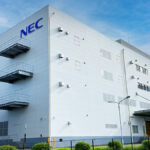ASIA ELECTRONICS INDUSTRYYOUR WINDOW TO SMART MANUFACTURING
Huawei Boosts 5G Solutions for Industry 4.0
Recently, the 5G Smart Factory Forum held a successful run at the Huawei European Supply Center (HESC) in Budapest. Accordingly, Huawei stated that 5G-powered innovative solutions will drive typical applications and basic capabilities of future smart factories. Among these solutions are self-driving vehicles, AI-driven quality control, and AR-assisted remote maintenance.
5G Industrial Infrastructure
Huawei is driving broad adoption of 5G and AI technologies in Industry 4.0-related fields and facilitate the development of the digital economy. Thus, the company is promoting the inclusion of innovative 5G solutions for Industry 4.0 infrastructure in the Global Alliance on AI for Industry and Manufacturing (AIM Global). The United Nations Industrial Development Organization (UNIDO) particularly the said alliance.
Vicky Zhang, Vice Director of Huawei’s Global Corporate Communications Department, said that in 5G’s fourth year of commercial use, innovative applications integrating 5G, AI, and cloud computing technologies are prevalent across various industries. Particularly, this is true in smart manufacturing.
She also pointed out that there are already mature best practices, like HESC in Páty, that demonstrate the tangible business and social value of these innovative applications.
“Next, Huawei will work with international organizations like UNIDO to promote the sharing and application of 5G industrial infrastructure solutions and related capabilities around the world, to drive the development of Industry 4.0,” Zhang said.

In July this year, Huawei and UNIDO launched AIM Global, a dedicated platform for collaboration and knowledge-sharing and facilitating the innovation and application of AI technologies in the industrial and manufacturing sectors.
Dr. Ulrike Fasbender, Professor at the University of Hohenheim in Germany, sees HESC as a prime example of the rapid development and innovation spurred by digitalization. Furthermore, Fasbender said, “The impact of digital solutions such as augmented reality and autonomous forklifts enabled by 5G connectivity are a true game-changer for workplaces. If done right, these technologies let employees solve tasks more efficiently while shielding them from strenuous and unhealthy tasks. Such improved working conditions will be crucial for employability as the average age of the working population increases.”
Leverages R&D, Digital Technologies
Meanwhile, Dr. Fasbender said countries and companies that fail to make good use of technology will lose their competitiveness in the digital economy. Notably, an economy can only stay dynamic by revolving around the ecosystems that serve the industry.
Sandor Papp, Deputy Director of HESC, noted, “HESC first deployed 5G-powered automation solutions at the end of 2019. Since then, we have integrated a dedicated core network with the local edge computing system to realize self-driving forklift trucks and the full automation of the entire logistics system.”
In addition, Papp said AI-driven quality control and AR-assisted remote maintenance have improved the logistics efficiency of the entire campus by 20%. Thus, greatly enhancing Huawei’s ability to serve its European customers.”
“Moving forward, Huawei will leverage its strengths in R&D, digital technologies, and supply chains to strengthen collaboration with all players across supply chains. We will also help empower local companies to enhance the adoption of digital and intelligent technologies during their production and operations so that we can achieve high-quality development together,” he added.
HESC, based in Hungary, is Huawei’s largest supply center outside China. Moreover, it is responsible for supplying Huawei products to more than 50 countries in Europe, Central Asia, and Northern Africa.
The center handles around 50,000 to 60,000 items every month and transports an average of 400cu.m of outbound cargo hauled by 30 trucks every day.




